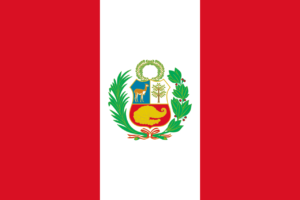Peru | History, Capital, Language, Flag, Facts & Geography of Peru
History of Peru:
Peru has been inhabited by people of various tribes throughout most of its ancient history. In the 12th century, the small city-state of Cusco was founded by the Circassian leader Manco Capac. This was the beginning of the Inca Empire. Over the next hundred years, the Inca Empire expanded, conquering Peru, most of Ecuador, parts of Bolivia, and northern Chile. The Inca civilization reached a high level when the Spanish arrived in 1531.
Spanish conquistador Francisco Pizarro conquered the Inca in 1533 and conquered Cuzco. The Spaniards soon discovered gold and silver in the Andes, and Peru became a great source of Spanish wealth and power. In 1535 Francisco Pizarro founded the city of Lima. Lima became the capital of the region and is still a major international city today. Peru declared her independence in 1821. With the help of South American liberation heroes José de San Martina and Simon Bolivar, Peru managed to defeat Spain and become a free nation.
Get Free Counseling
Information about Peru:
| Capital | Lima |
| Population | 34,403,218 (Source: 2023 worldometer) |
| Major Cities | Lima (capital), Arequipa, Trujillo, Chiclayo, Piura, Iquitos, Cusco, Chimbote. |
| Borders | Bolivia, Brazil, Chile, Colombia, and Ecuado |
| Gross Domestic Product (GDP) | $242,632,000,000 (2022 worldometer) |
| Currency | nuevo sol (PEN) |
Flag of Peru:
Peru Economy Key Industries:
Peru Major Industries: mining and refining of minerals; steel, metal fabrication; petroleum extraction and refining, natural gas; fishing and fish processing, textiles, clothing, food processing
Peru Agricultural Products: coffee, cotton, sugarcane, rice, potatoes, corn, plantains, grapes, oranges, coca; poultry, beef, dairy products; fish
Peru Natural Resources: copper, silver, gold, petroleum, timber, fish, iron ore, coal, phosphate, potash, hydropower, natural gas
Peru Major Exports: copper, gold, zinc, crude petroleum and petroleum products, coffee
Peru Major Imports: petroleum and petroleum products, plastics, machinery, vehicles, iron and steel, wheat, paper
The Geography of Peru:
Total Size of Peru: 1.285 million km² (source: 2022 wikipedia)
Geographical Low Point of Peru: Pacific Ocean 0 m
Geographical High Point of Peru: Nevado Huascaran 6,768 m
Climate of Peru: varies from tropical in east to dry desert in west; temperate to frigid in Andes
General Terrain of Peru: western coastal plain (costa), high and rugged Andes in center (sierra), eastern lowland jungle of Amazon Basin (selva)
World Region or Continent of Peru: South America
Geographical Coordinates: 10 00 S, 76 00 W
The People of Peru & Culture
Peru Government Type: constitutional republic
Peru Nationality: Peruvian(s)
Peru National Holiday: Independence Day, 28 July (1821)
Peru Independence: 28 July 1821 (from Spain)
Peru National Symbol: vicuna (a camelid related to the llama)
Peru National Anthem or Song: Himno Nacional del Peru (National Anthem of Peru)
Peru Languages Spoken: Spanish (official), Quechua (official), Aymara, and a large number of minor Amazonian languages
Peru Religions: Roman Catholic 81%, Seventh Day Adventist 1.4%, other Christian 0.7%, other 0.6%, unspecified or none 16.3% (2003 est.)
Interesting Facts about Peru:
Peru has mountains, coasts, jungles and deserts.
With 90 different microclimates, he is one of the most biodiverse places on earth.
The Amazon begins with streams of water flowing from glaciers in the Misumi Mountains near the city of Arequipa in southern Peru.
Geographically, it is the third largest country in South America after Brazil and Argentina.
The Andes Mountains that cut across Peru are the largest mountain range in the world. We have Machu Picchu, one of the seven wonders of the modern world.
Pink dolphins live here! It can be seen in the Amazon jungle of Peru.
The highest navigable lake in the world is Lake Titicaca in Puno, between Peru and Bolivia.
Guinea pigs are native to Peru and were (and still are) domesticated for food – a delicacy!
In this sense, the painting The Last Supper, which hangs in Cusco’s cathedral, depicts the guinea pig as the focal point of the meal.
The oldest city in America is Caral, north of Lima. Peru has about 4000 varieties of potatoes, 55 varieties of corn and 350 varieties of chili peppers.
His second highest dune in the world is Cerro Blanco, near Nazca, with a bottom-to-top height of his 1176 meters (3858 ft).
Chicha de jora is the country’s most popular drink, made in house from sprouted and fermented corn since the time of the Incas.
The Incas established constellations based on the dark shadows of the Milky Way, not just the light.
Some believe that aliens have a ship runway in the Nazca Lines in Peru.
